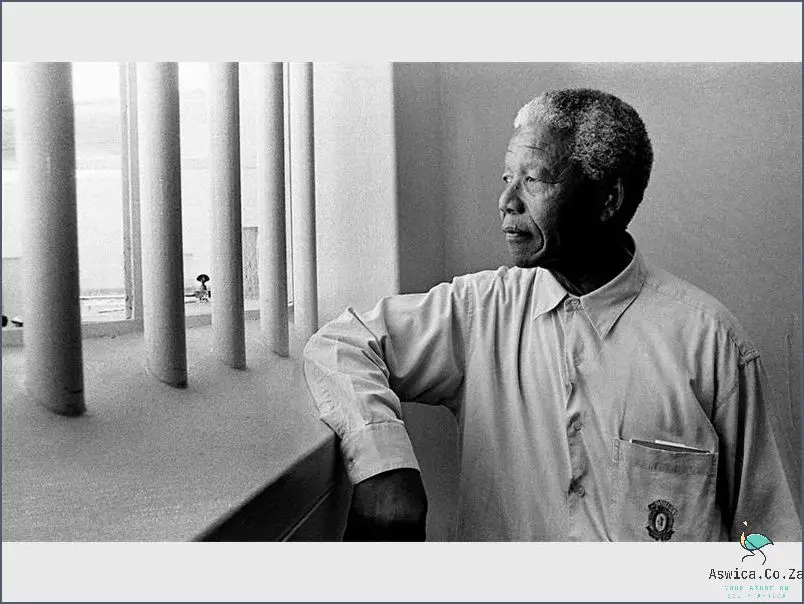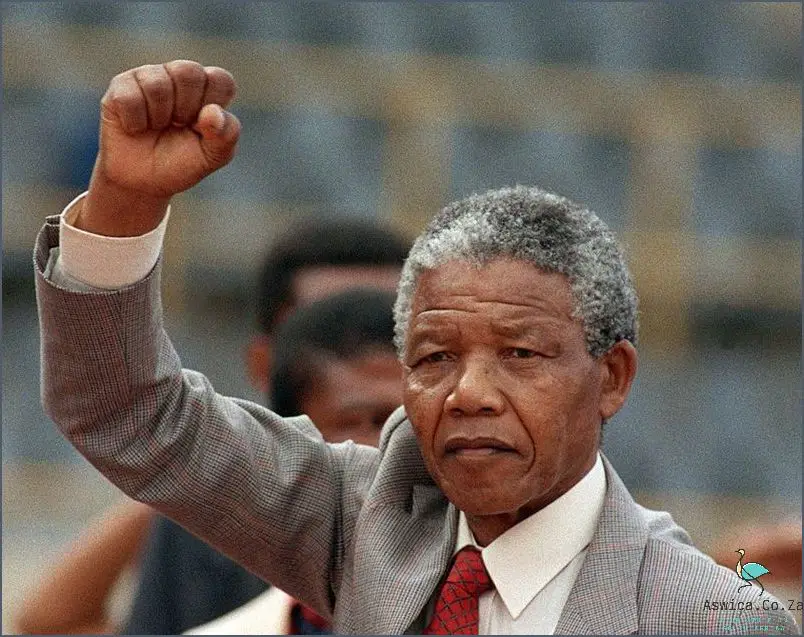
Nelson Mandela Released Prison is an event that marked a significant milestone in the history of South Africa. On February 11th, 1990, nearly 27 years after being arrested and convicted of leading an armed struggle against the apartheid regime, Nelson Mandela was released from prison. Mandela’s release was a major victory for the anti-apartheid movement and signaled the start of the end of the oppressive white-minority rule in South Africa. The event inspired millions of people around the world who had been fighting for human rights and democracy in South Africa. Mandela went on to become the first black President of South Africa in 1994 and is an international symbol of courage, resistance, and reconciliation.
Contents
Nelson Mandela Released Prison
Nelson Mandela was released from prison on February 11th, 1990 after spending 27 years in prison. He had been imprisoned for his activism against the South African government’s policy of racial segregation known as apartheid. He was immediately welcomed by thousands of people representing a diverse range of backgrounds and cultures. Upon his release, Nelson Mandela declared that he was committed to peace and reconciliation between white and black South Africans. He also promised to lead South Africa through a period of transition to democracy and racial harmony. He would eventually become the first democratically elected president of South Africa in 1994. Nelson Mandela’s release from prison was an important moment in the history of South Africa and a powerful symbol of the power of non-violent resistance.
Details of Mandela’s imprisonment and the circumstances around it
Nelson Mandela, the beloved South African icon, spent a total of 27 years behind bars in his country’s notorious prisons. His imprisonment began in 1962 when he was taken into custody and charged with sabotage and treason. Mandela was accused of plotting to overthrow the government and was subsequently sentenced to life in prison.

During his imprisonment, Mandela was held in a number of different facilities, including the notorious Robben Island prison. Here, he was kept in solitary confinement in a small, damp cell without adequate heating, furnishings, or lighting. His daily routine consisted of hard labor in a limestone quarry, where he was subjected to cruel treatment by the guards. Despite this, he remained determined to continue his fight for justice and freedom.
Mandela’s imprisonment was a major point of contention during the anti-Apartheid movement. Hundreds of thousands of people around the world campaigned for his release, and numerous governments and organizations placed pressure on the South African government to free him. After his release in 1990, Mandela went on to become South Africa’s first black president and a global icon for freedom and justice.
The circumstances of Mandela’s imprisonment were a stark reminder of the injustices of the Apartheid regime. Despite being imprisoned, Mandela managed to remain a beacon of hope for many South Africans, inspiring them to keep fighting for a better tomorrow. His courage and resilience in the face of such difficult circumstances have left an indelible mark on the world, and his legacy of freedom and justice will continue to be remembered for generations to come.
Changes in South Africa following Mandela’s imprisonment
The release of Nelson Mandela from prison in 1990 marked a pivotal moment in South African history. Mandela had been the leader of the African National Congress (ANC) and had been incarcerated for 27 years on charges of treason. Mandela’s release signified a major turning point in the struggle for racial justice in South Africa and would ultimately result in sweeping changes for the country.
One of the most dramatic changes was the dismantling of the oppressive apartheid system that had been in place since 1948. This system had institutionalized discrimination against the black population and denied them basic rights. Once Mandela was released, the ANC was able to work towards ending the system and in 1994 apartheid was abolished.

The end of apartheid also meant that the black population could finally participate in politics. This was facilitated by the implementation of universal suffrage and the adoption of a new constitution in 1996. These changes were so significant that they enabled Mandela to become the first black President of South Africa in 1994.
The Mandela administration also worked to improve the socioeconomic conditions of the black population. This included the implementation of affirmative action policies, the introduction of free health care, and the establishment of a minimum wage. These changes had a profound impact on the lives of millions of South Africans and helped to reduce inequality.
In addition to these changes, Mandela also promoted the reconciliation of South Africans from different racial backgrounds. He was a passionate advocate for peaceful coexistence and sought to bring the country together after decades of violence and oppression. This effort was strengthened by the Truth and Reconciliation Commission, which was established in 1995 to investigate human rights abuses.
Overall, the release of Nelson Mandela from prison marked a turning point in South African history. His leadership and vision enabled the country to transition to a more equitable and just society. This has had a lasting impact on the country and Mandela’s legacy is still felt today.
Impact of Mandela’s release from prison on South Africa and the world

Nelson Mandela’s release from prison on February 11, 1990 is widely regarded as one of the most important events of the twentieth century. His release, after 27 years of incarceration in South Africa, marked the end of an oppressive and brutal apartheid regime, and brought about a new era of freedom and justice for the people of South Africa.
The impact of Mandela’s release was felt not only in South Africa, but throughout the world. It was a powerful symbol of hope and resilience in the face of oppression and injustice. Mandela himself became a global symbol of peace and unity, and his unwavering commitment to non-violence and reconciliation inspired millions of people around the globe.
In South Africa, Mandela’s release signaled the beginning of a new era. The fall of apartheid allowed for the creation of a multiracial democracy and the election of a black president, Nelson Mandela, in 1994. This marked a turning point in South African history, and provided a platform for the country to rebuild and heal from the wounds of the past.
The ripple effects of Mandela’s release were also felt around the world. For many countries, it was a reminder of the power of peaceful resistance and perseverance in the face of adversity. It encouraged others to take up the cause of freedom and justice and inspired a new generation of activists and leaders.
Today, Mandela’s legacy of peace and justice continues to be a source of inspiration and hope for people around the world. His commitment to non-violence, reconciliation, and human rights has been an example to many, and his legacy continues to be celebrated and cherished. The impact of his release from prison will no doubt be felt for generations to come.
Conclusion
Nelson Mandela was released from prison after 27 years on February 11, 1990. This event was a watershed moment in South Africa’s history, as it demonstrated the power of nonviolent protest and the strength of a united people. Mandela’s release showed that change is possible, and that a people can fight for their rights and freedom. Mandela’s legacy is that of a peaceful champion of human rights, and his release will continue to inspire people around the world to fight for their own rights and freedom.




